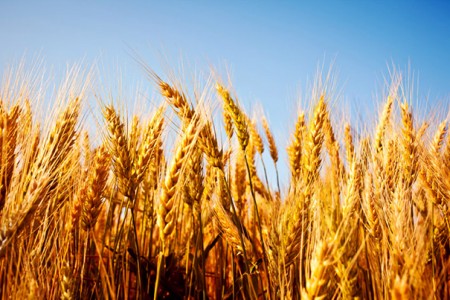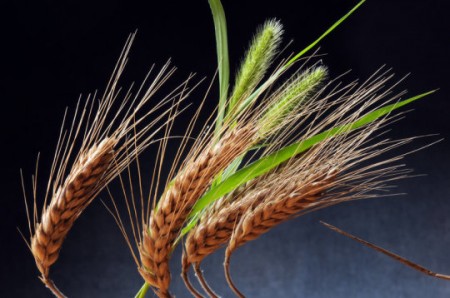July 26, 2015 – Three farm stories caught my eye this week. The first, a truly revolutionary one that pushes back the dawn of the age of agriculture some 11,000 years. The second, a GMO story featuring a new rice that produces less greenhouse gas. And the third, a Harvard study about declining zinc levels in food because of rising carbon dioxide levels in the atmosphere.
Agricultural technology is critical to human survival. With our global population growing by 1.14% per year it means there are 80 million more mouths to feed annually. By 2050 world population estimates vary from 9 to 10 billion. So getting agriculture right should be top of mind for all of us and for governments at all levels.
It was the Agricultural Revolution at the dawn of the Neolithic that set humanity on this path to unprecedented population growth. So it’s good to start with a story that tosses out some of our old conceptions about just when the Neolithic really started.
When Did Humans Start Farming?
We used to think 12,000 years ago. But now a new discovery by researchers from Tel Aviv University, Harvard University, Bar-Ilan University and the University of Haifa have uncovered evidence that puts the date 23,000 years in the past. The discovery is described in the journal PLOS ONE this month.
The evidence comes from finding what the researchers call “proto-weeds” at an archaeological site on the shore of the Sea of Galilee in Israel. Weeds evolved in parallel with cultivated plants. So finding a “significant presence of weeds in archaeo-botanical assemblages” is an indicator of systematic cultivation. What were these early farmers planting? Wild emmer wheat, barley and oats.
Borrowed Barley Gene Reduces Methane Emissions from Rice
Methane is a potent greenhouse gas and is credited with a contribution of 20% to global warming. Rice paddies produce up to 17% of atmospheric methane. That’s because rice is planted in waterlogged, warm soil and methanogenesis occurs in the root systems.
Now consider this. On a global average each one of us consumes 68 kilograms (150 pounds) of rice annually. The largest population growth areas on the planet are in areas where rice is a primary food staple. That means planting more rice to feed extra mouths will mean more greenhouse gases entering the atmosphere. So scientists have been pursuing a way to reduce methane emissions from the growing of rice. And the way they have done it is to introduce a gene from barley that makes the rice plant store more carbon. They call their rice, SUSIBA2. The plant shifts its carbon storage into the rice kernels and stems rather than the root systems. With less carbon entering the soil through the roots it remains an unknown what impact this will have on microbial communities associated with rice cultivation. Hence the scientists are carefully growing and testing the rice over multiple generations. It is anticipated that it will a decade before SUSIBA2 rice becomes commonly planted.
The picture below shows SUSIBA2 rice on the left and regular rice on the right. Note the concentration of microbial bacteria is far less than in the latter. To read the research check out the paper appearing in Nature Letters on July 22nd.
Harvard Study Raises Concern About Falling Levels of Zinc in Staple Crops
A study appearing in The Lancet Global Health this last week notes that increased atmospheric carbon dioxide (CO2) is impacting zinc content and other nutrients in basic food crops. Why is this an issue?
Because zinc deficiency is already a problem today with an estimated 2 billion people on the planet not getting enough of it through diet. For diabetics, people suffering from inflammatory bowel disease, for the health of the immune system, zinc plays a critical role. Zinc deficiency is linked to respiratory diseases and in fact, zinc lozenges are commonly used to shorten the duration of a common cold.
In the study the researchers looked at atmospheric CO2 concentrations of 375 to 384 parts per million (ppm) and zinc intake in populations in 188 countries. They then projected elevated CO2 levels to 550 ppm by mid-century. You may disagree with that higher CO2 level but at current rates of emissions that scenario is deemed likely by 2050.
In their findings the researchers noted that zinc deficiency risk would increase for those living in Africa and South Asia to the tune of 138 million people. The implications for the vulnerability of these populations, already in areas where food production is under stress, cannot be overlooked.
One of the lead researchers, Samuel Myers, points out:
“All of human civilization has taken place during a very stable set of biophysical conditions, but we are now changing those conditions at a rate that’s never been seen before…..Whether we’re talking about land use, deforestation, degradation of global fisheries, disruption of the climate system, biodiversity loss, appropriation of fresh water, changes to aquatic systems — all of the changes are profound and they’re accelerating, and they represent a significant challenge to global health.”



















